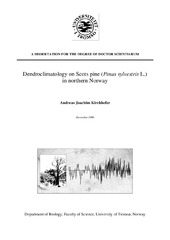Bearded seal vocalisations across seasons and habitat types in Svalbard (Norway)
Permanent link
https://hdl.handle.net/10037/19000Date
2019-08-15Type
Master thesisMastergradsoppgave
Author
Martínez Llobet, SamuelAbstract
Male bearded seals use vocal displays to attract females and compete with other males during the
mating period, making it possible to monitor breeding populations using passive acoustic
monitoring (PAM). This study analysed year-round acoustic data from underwater recorders at
three sites with different environmental conditions in Svalbard (Norway). Male bearded seals
vocalised for an extended period at the drift-ice site (Atwain; January-July), while the vocal
season was shorter at the fast-ice site (Rijpfjorden; February-June) and shortest at a site where a
dramatic reduction in sea ice cover has occurred (Kongsfjorden; April-June). Generalised
Additive Models showed marked seasonal segregation in the use of different trill call types at
Atwain where call rates reached 400 per h, with long trills dominating during the study period
over step and sweep trills. Modest seasonal segregation was seen at Rijpfjorden, where call rates
reached 300 per h and no seasonal segregation in trill types occurred in Kongsfjorden (peak call
rate 80 per h). Sea ice cover was available throughout the vocal season at Atwain and
Rijpfjorden, while at Kongsfjorden there was a mismatch between the peak in vocal activity
(May-June) and the time when ice was present (until April). Some call types might be
preferentially used if their properties make them more suitable for attracting females in certain
environments. This study provided novel information about vocalising male bearded seals at
sites with different environmental conditions in Svalbard and confirmed that PAM is a useful
tool for studying this species in a warming Arctic.
Publisher
UiT Norges arktiske universitetUiT The Arctic University of Norway
Metadata
Show full item recordCollections
Copyright 2019 The Author(s)
The following license file are associated with this item:
Except where otherwise noted, this item's license is described as Attribution-NonCommercial-ShareAlike 4.0 International (CC BY-NC-SA 4.0)
Related items
Showing items related by title, author, creator and subject.
-
An interannual study of foraging behaviour in sympatrically breeding macaroni Eudyptes chrysolophus and chinstrap penguins Pygoscelis antarcticus at Bouvetøya
Narvestad, Audun (Master thesis; Mastergradsoppgave, 2019-08-15)Species are likely to segregate their ecological niches to minimize competition for resources, but for centrally foraging predators that breed on sub-Antarctic islands in the Southern Ocean the possibility of niche segregation may be minimal. This study is the first to examine the spatial and trophic aspects of the foraging niche of sympatrically breeding macaroni and chinstrap penguins at the ... -
Progression in humpback whale song structure and complexity on a subarctic feeding ground in Northern Norway
Martin, Saskia C. (Master thesis; Mastergradsoppgave, 2021-08-16)Male humpback whales (Megaptera novaeangliae) sing structurally complex songs traditionally associated with low latitude breeding grounds. This vocal behaviour is increasingly reported outside these areas. All singers in a given population sing the same version of a song that is constantly evolving with modifications on different levels within the song structure. This study provides the first detailed ... -
Dendroclimatology on Scots pine (Pinus sylvestris L.) in northern Norway
Kirchhefer, Andreas Joachim (Doctoral thesis; Doktorgradsavhandling, 2000-03-17)A total of ten tree-ring chronologies of Scots pine, Pinus sylvestris L., was constructed between the Vesterålen archipelago and the Finnmarksvidda in order to investigate the regional variability of radial growth and climate response of pine. The longest tree-ring chronology, located in Forfjorddalen in Vesterålen, was highly significant back to AD 1354. The study area was divided into three ...


 English
English norsk
norsk



